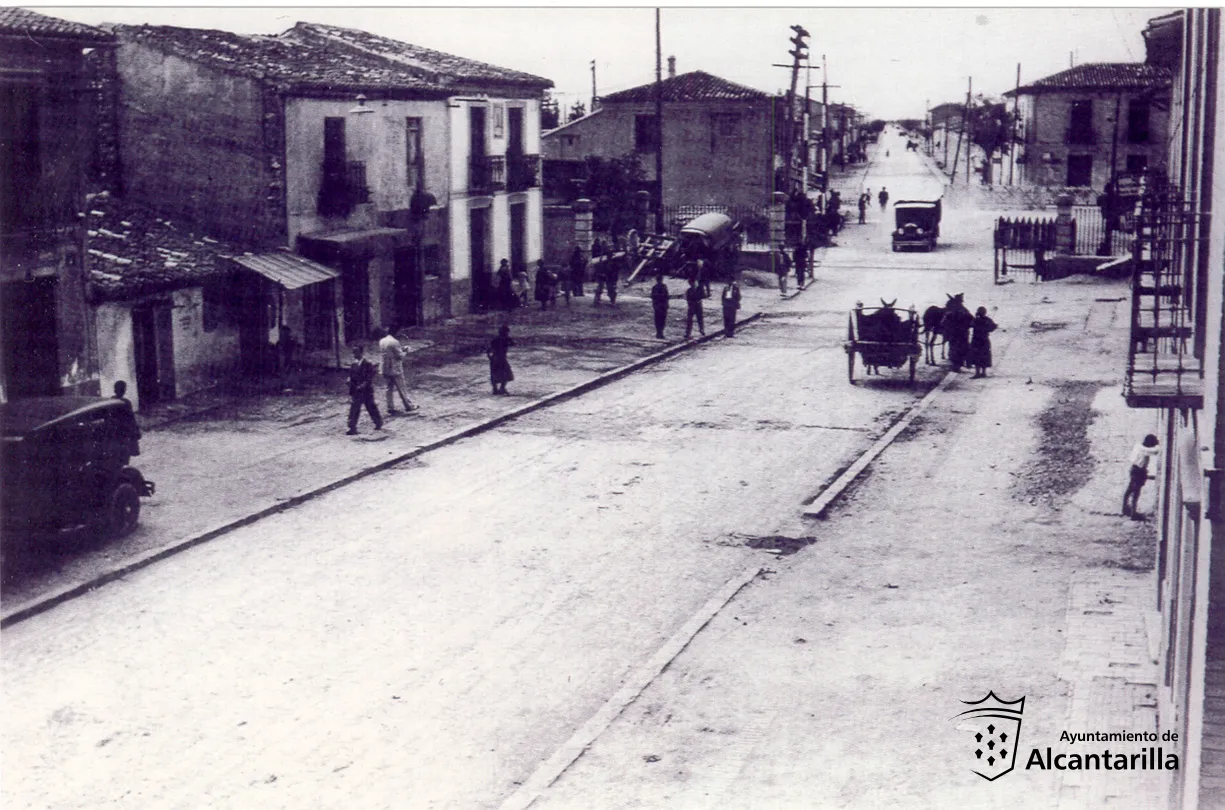
The three railway lines from Chinchilla, Cartagena, and Lorca, on their way through Alcantarilla, were connected to each other forming a triangle in the centre, from which the name “Entrevías” was derived.
From the end of the 19th century, the passage of the railway through the town brought many benefits for the development of industry and population growth, but it had the disadvantage of splitting the population in two, establishing a dividing barrier between the population centre developed until the 19th century and the urban expansion from the first decades of the 20th century onwards.
In the foreground, we can see the beacons that reinforced the beams separating the railway track, configured as diamond-shaped lattices. On the left, the popular bar “El Cepo”, founded in 1923 by Juan Mª Martínez, in the hut that had previously served as a warehouse and rest area for the railway workers’ crews. The bar was called “cepo” because its location coincided with the intermediate space where the vehicles were trapped when the barriers closed, a name by which it is still known today.
Next to the “Cepo” bar was the guardhouse and a wooden building used to sell vegetables called “La Luteria”, another of Alcantarilla’s old establishments.
Although the Alcantarilla-Lorca-Baza line was dismantled, the place now known as Plaza de Adolfo Suárez is still called “Entrevías”.

